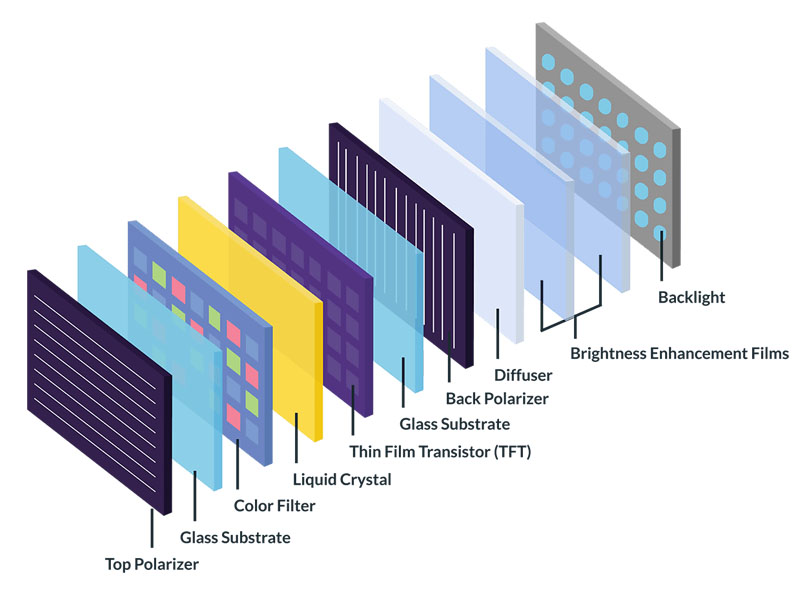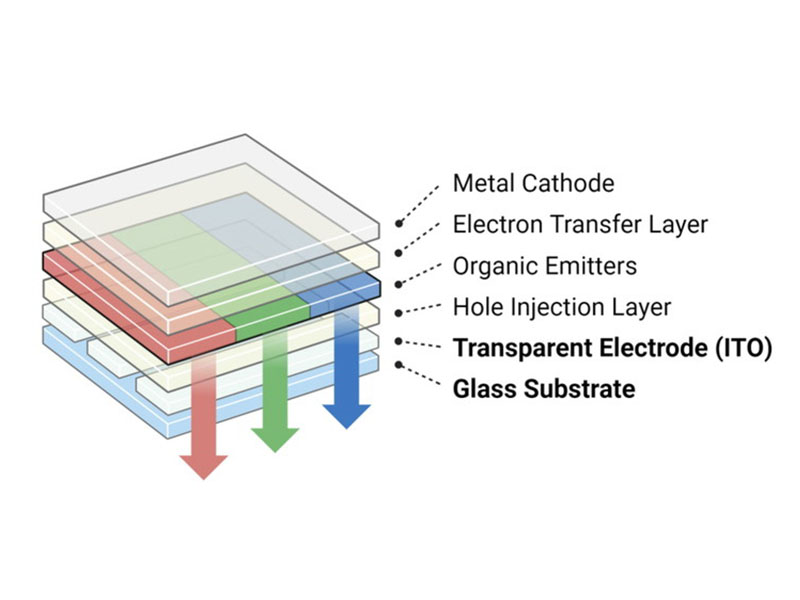I often get inquiries from customers asking for an OLED display.But after a few questions, it turns out they actually need an LCD display.
When I first joined the industry, I was also confused.So today, let’s break down the difference between LCD and OLED in a simple way.
Lcd or OLED, remember this first:The core difference is how they light up.

LCD – Needs Backlight to Shine
LCD stands for Liquid Crystal Display.
It doesn’t create its own light. It “borrows light” from a backlight, usually LED.
Think of it like reading a book — you need a lamp to see the words.
Behind the LCD screen, there’s a backlight layer (many tiny “lamps”).
Then comes a liquid crystal layer — like millions of tiny gates that open or close to let light through.
Finally, a color filter layer turns the white light into red, green, and blue.Because LCD uses one unified light source, brightness is even, and the screen is stable over time.
It’s a bit thicker, but very reliable.

OLED – Self-Emitting Pixels
OLED stands for Organic Light-Emitting Diode.Each pixel can emit light by itself — no backlight needed. Imagine a blackboard covered with tiny RGB lights.
Turn on one light, that pixel glows; turn it off, it’s dark.
That’s why OLED screens are super thin, flexible, and show vivid colors.
But every pixel has its own lifespan.If the same image stays too long, it may leave a burn-in mark (also called image retention).
How to Choose Between LCD and OLED?
It depends on your application.
✅ Choose LCD when the device runs long hours or faces harsh environments:
In-vehicle displays (wide temperature range)
Industrial control panels (24/7 operation)
Outdoor displays (need high brightness)
✅ Choose OLED when you want the ultimate look and ultra-thin design:
High-end smartphones
Premium consumer or industrial devices
We’ve been providing LCD display solutions for over 15 years.Many new buyers make mistakes simply because they don’t know these differences.
For example:
Using OLED in a car display — ends up blacking out under summer heat.Using standard LCD for outdoor signage — too dim under sunlight.
Just tell your supplier your use scenario, and a professional team can match you with the right display for your product.